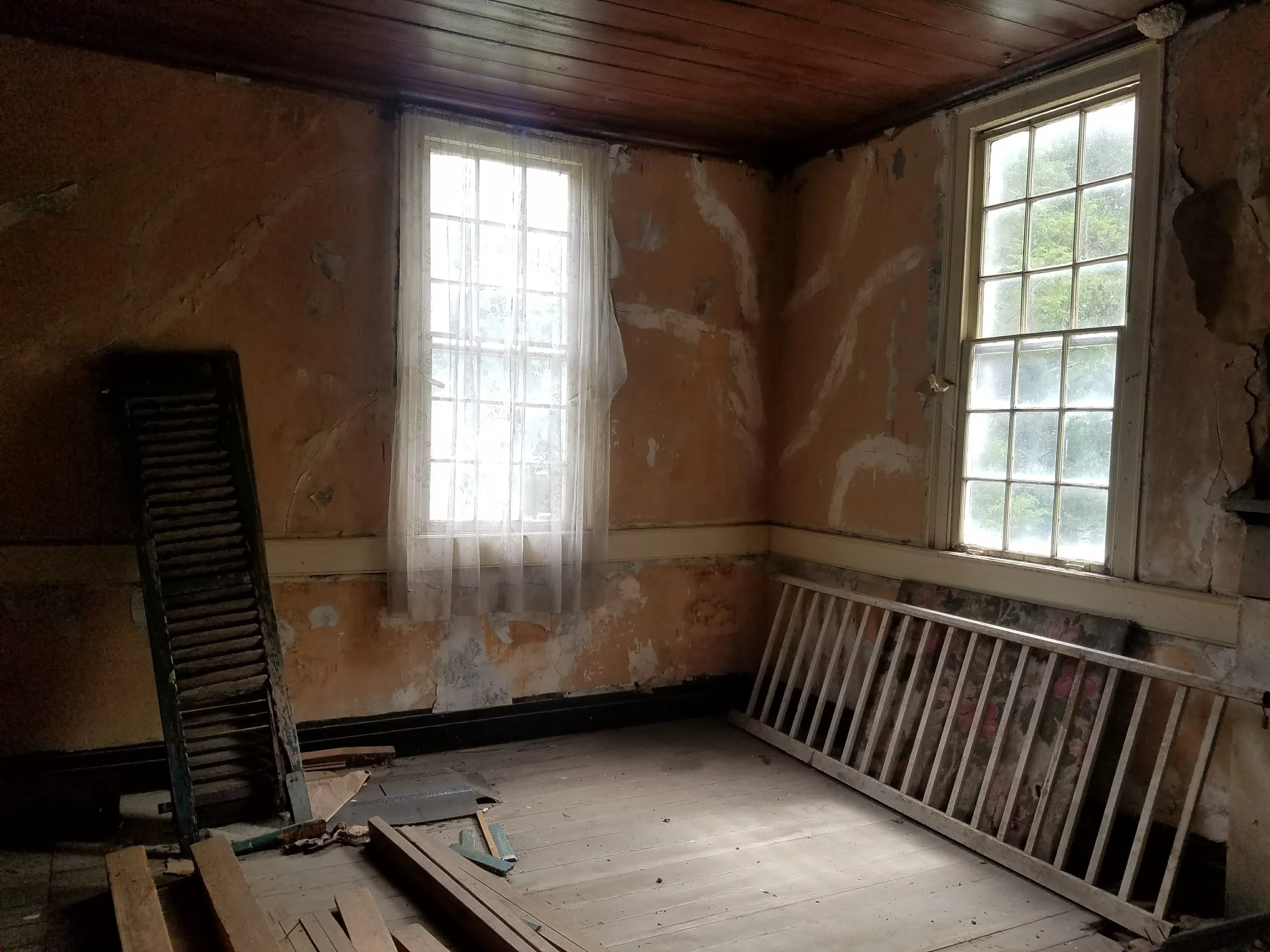A History of the Wallace House
one story about The wallace house begins like this…
Samuel Wallace came to Alabama as a soldier with Andrew Jackson, and it is believed that he fought in the Battle of Horseshoe Bend against the Creek Indians in 1814. He returned to Alabama from his home in Virginia about 1832 and built a cabin on land granted from the federal government.
He then brought his family along with 39 persons enslaved by him from Virginia. They constructed the house that we know today, completing it in 1841. The house is built of lumber from trees on his land and the chimneys made of oversized brick made at a kiln in Calera by the enslaved persons. The house has a Greek Revival portico on the front, with marble steps from Sylacauga.
Samuel Wallace became a successful cotton planter, and, in 1850, he and his son Wales, who lived at the Wallace House and would inherit the plantation, had 95 enslaved persons. At its height, the plantation is said to have included about 5,000 acres. The enslaved and the enslaver and his family were buried in contiguous Black and white cemeteries about a mile from the House.
His son, Wales Wellington Wallace, fought in the Confederate States Army from 1862-65.
Following emancipation, in 1870-80, 27 formerly enslaved persons with the last name Wallace continued to live in Harpersville. Census records showed that the majority of them had been born outside of Alabama (23) and had parents born in Virginia, indicating that their families had been enslaved for at least two generations Others, of course, had left the town after emancipation or had other last names.
Samuel Wallace died in 1869 and is buried in the family cemetery. Wales married Kate Henderson Wallace and raised his family at the Wallace House. When he died in 1901, the family remaining at the House moved to Columbiana, the county seat, where Wales Wallace Jr. was a politician and later a judge. The house was rented out for several decades, including to the Wyatts of Harpersville. Two of the widowed daughters, Taliferro and Rosa, returned to live near the Wallace House, managing the farm land, until their deaths in the 1960s.
One of Wales Sr.’s sons, Samuel Henderson Wallace, a physician from Birmingham, planned to retire to the house but died before this became a reality. His widow, Nell J. Wallace, lived in the house for a year and then returned there with her daughter, Erin, and granddaughter, Nell, for summers during the ‘50s. Since that time it has been vacant, except for occasional weekend use by the family which stopped by 1970. The most recent family owners have been stewards of the house, contributing to its stabilization.
Many African-Americans from Harpersville joined the Great Migration of some six million African-Americans out of the South, from WWI to the 1970s. Often, some members of an extended family would leave while others would stay. Today, the African American Wallace family reunions bring together family members from across the country and are held in Harpersville and in other parts of the country. Most of the African American Wallace descendants of persons on the plantation are from three persons: Lucy Wallace Baker, Anderson Wallace, and Henderson Wallace.
In 2018, the House was inherited by Nell Gottlieb, 2nd great granddaughter of Samuel Henderson Wallace, who, with co-founder Theoangelo Perkins, established the non-profit organization Klein Arts & Culture and, in 2019, deeded the house and associated six acres to it. The first homecoming for all persons of the place was held in October 2018. In 2023, the organization’s name was changed to The Wallace Center for Arts and Reconciliation to encompass the heritage of both the Black and white descendants and to reflect the mission of the organization.
